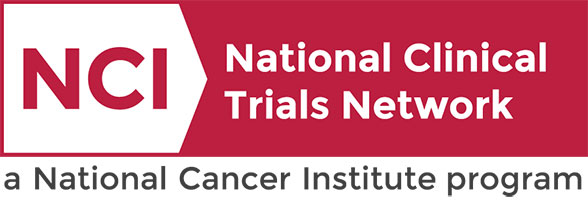Clinical Trials Search at Vanderbilt-Ingram Cancer Center
Safety and Efficacy of ALLO-501A Anti-CD19 Allogeneic CAR T Cells in Adults With Relapsed/Refractory Large B Cell Lymphoma (ALPHA2)
The purpose of the ALPHA-2 study is to assess the safety, efficacy, and cell kinetics of
ALLO-501A in adults with relapsed or refractory large B-cell lymphoma after a lymphodepletion
regimen comprising fludarabine, cyclophosphamide, and ALLO-647
ALLO-501A in adults with relapsed or refractory large B-cell lymphoma after a lymphodepletion
regimen comprising fludarabine, cyclophosphamide, and ALLO-647
Not Available
II
Jallouk, Andrew
NCT04416984
VICC-DTCTT24008
Testing the Combination of New Anti-cancer Drug Peposertib with Avelumab and Radiation Therapy for Advanced/Metastatic Solid Tumors and Hepatobiliary Malignancies
This phase I/II trial studies the best dose and side effects of peposertib and to see how well it works with avelumab and hypofractionated radiation therapy in treating patients with solid tumors and hepatobiliary malignancies that have spread to other places in the body (advanced/metastatic). Peposertib may stop the growth of tumor cells by blocking some of the enzymes needed for cell growth. Immunotherapy with monoclonal antibodies, such as avelumab, may help the bodys immune system attack the cancer, and may interfere with the ability of tumor cells to grow and spread. Hypofractionated radiation therapy delivers higher doses of radiation therapy over a shorter period of time and may kill more tumor cells and have fewer side effects. Giving peposertib in combination with avelumab and hypofractionated radiation therapy may work better than other standard chemotherapy, hormonal, targeted, or immunotherapy medicines available in treating patients with solid tumors and hepatobiliary malignancies.
Not Available
I/II
Heumann, Thatcher
NCT04068194
VICC-NTGIT24020
A Study to Evaluate INCA033989 Administered in Participants With Myeloproliferative Neoplasms
Leukemia
Leukemia
This study is being conducted to evaluate the safety, tolerability, dose-limiting toxicity
(DLT) and determine the maximum tolerated dose (MTD) and/or recommended dose(s) for expansion
(RDE) of INCA033989 administered in participants with myeloproliferative neoplasms.
(DLT) and determine the maximum tolerated dose (MTD) and/or recommended dose(s) for expansion
(RDE) of INCA033989 administered in participants with myeloproliferative neoplasms.
Leukemia
I
Mohan, Sanjay
NCT06034002
VICC-DTHEM23416P
Study of Selinexor in Combination With Ruxolitinib in Myelofibrosis
Multiple Cancer Types
This is a global, multicenter Phase 1/3 study to evaluate the efficacy and safety of
selinexor plus ruxolitinib in JAK inhibitor (JAKi) treatment-nave myelofibrosis (MF)
participants. The study will be conducted in two phases: Phase 1 (open-label) and Phase 3
(double-blind). Phase 1 (enrollment completed) was an open-label evaluation of the safety and
recommended dose (RD) of selinexor in combination with ruxolitinib and included a dose
escalation using a standard 3+3 design (Phase 1a) and a dose expansion part (Phase 1b). In
Phase 3, JAKi treatment-nave MF participants are enrolled in 2:1 ratio to receive the
combination therapy of selinexor + ruxolitinib or the combination of placebo + ruxolitinib.
selinexor plus ruxolitinib in JAK inhibitor (JAKi) treatment-nave myelofibrosis (MF)
participants. The study will be conducted in two phases: Phase 1 (open-label) and Phase 3
(double-blind). Phase 1 (enrollment completed) was an open-label evaluation of the safety and
recommended dose (RD) of selinexor in combination with ruxolitinib and included a dose
escalation using a standard 3+3 design (Phase 1a) and a dose expansion part (Phase 1b). In
Phase 3, JAKi treatment-nave MF participants are enrolled in 2:1 ratio to receive the
combination therapy of selinexor + ruxolitinib or the combination of placebo + ruxolitinib.
Hematologic,
Phase I
I/III
Mohan, Sanjay
NCT04562389
VICCHEMP2130
A Phase 1 Study of AB521 in Renal Cell Carcinoma and Other Solid Tumors
Multiple Cancer Types
The purpose of this study is to evaluate the safety and tolerability of AB521 when taken
alone in participants with advanced solid tumor malignancies and clear cell renal cell
carcinoma (ccRCC).
alone in participants with advanced solid tumor malignancies and clear cell renal cell
carcinoma (ccRCC).
Kidney (Renal Cell),
Phase I
I
Rini, Brian
NCT05536141
VICC-DTURO23168P
Avelumab or Hydroxychloroquine with or without Palbociclib for the Treatment of Stage II-III Breast Cancer, PALAVY Study
Breast
Breast
This phase II trial investigates the effect of avelumab or hydroxychloroquine sulfate with or without palbociclib in treating patients with stage II-III breast cancer that is positive for disseminated tumor cells (DTCs) after curative therapy. DTCs are breast cancer cells that are asleep (dormant) in the bone marrow. There are multiple ways in which these cells stay alive, and three of these mechanisms are inhibited by the drugs in this trial. First, dormant cancer cells need a protein signal pathway involving CDK 4/6 to start dividing once they wake up in order to survive as an active cancer cell. Palbociclib works by blocking the CDK 4/6 protein and by doing so may limit the dormant cancer cell from being able to survive. In addition, palbociclib may also help both of the other drugs in the trial to work better. Second, dormant cancer cells also use a process called autophagy to generate their own nutrition, which can allow them to stay asleep. Hydroxychloroquine has been shown to block autophagy, which leads to starvation of the cells. Third, dormant cancer cells are able to hide from the bodys immune system. The immune system sends a type of cell called T cells throughout the body to detect and fight infections and diseasesincluding cancers. One way the immune system controls the activity of T cells is through the PD-1/PD-L1 (programmed cell death protein-1) pathway. However, some cancer cells hide from T-cell attack by taking control of the PD-1/PD-L1 interaction and this stops T cells from attacking cancer cells. Avelumab is an antibody designed to block the PD-1/PD-L1 pathway and helps the immune system in detecting and fighting dormant cancer cells. Because palbociclib, hydroxychloroquine, and avelumab work on the mechanisms that keep the dormant cells alive, taking one or a combination of these drugs may be able to eliminate DTCs.
Breast
II
Reid, Sonya
NCT04841148
VICCBRE2161
A Study of BMS-986340 as Monotherapy and in Combination With Nivolumab or Docetaxel in Participants With Advanced Solid Tumors
The purpose of this study is to assess the safety, tolerability, and recommended dose(s) of
BMS-986340 as monotherapy and in combination with nivolumab or docetaxel in participants with
advanced solid tumors. This study is a first-in-human (FIH) study of BMS-986340 in
participants with advanced solid tumors.
BMS-986340 as monotherapy and in combination with nivolumab or docetaxel in participants with
advanced solid tumors. This study is a first-in-human (FIH) study of BMS-986340 in
participants with advanced solid tumors.
Not Available
I/II
Berlin, Jordan
NCT04895709
VICC-DTPHI23183
Evaluation of EBUS-TBNA versus EBUS-TBNA plus Transbronchial Mediastinal Cryobiopsy to Obtain Adequate Tissue Samples for Next Generation Sequencing, META-Gen Trial
This phase III trial compares how well endobronchial ultrasound-transbronchial needle aspiration (EBUS-TBNA) versus EBUS-TBNA plus transbronchial mediastinal cryobiopsy works to obtain adequate tissue samples for next generation sequencing (NGS). During usual care, if there is suspicion of cancer, a procedures known as an EBUS-TBNA is done to take sample of lymph nodes to evaluate for cancer spread. If there is suspected cancer in the lymph nodes, multiple samples are taken for molecular testing (NGS) to help guide treatment decisions. It requires a certain amount of tissue to send for the molecular testing which can be achieved with EBUS-TBNA about 70% of the time. Researchers want to find out if adding a biopsy tool currently used in usual care, known as a cryoprobe, can acquire more tissue for molecular analysis. The cryoprobe uses a freezing technique to biopsy and can potentially gather larger and higher quality tissue samples than the standard EBUS-TBNA method.
Not Available
III
Maldonado, Fabien
NCT06105801
VICC-VDTHO23177
Intraoperative Identification and Stimulation of the Glossopharyngeal Nerve
Head/Neck
Head/Neck
This clinical trial evaluates different nerve patterns to the throat muscles (stylopharyngeus and pharyngeal constrictor) and what they look like in different patients by measuring and photographing them in the neck during surgery when the nerves are dissected (separated into pieces) as part of regular surgical care. Researchers think that some of the muscles in the neck might be useful for treating a condition called obstructive sleep apnea (OSA). This happens when muscles of the throat relax at night and the airway becomes blocked. Blockage of airflow leads to drops in oxygen levels and can disturb sleep by forcing a persons brain to wake to restore airway muscles so they can breathe. This trial may help researchers provide a new way to treat OSA that may be better than the current standard ones.
Head/Neck
N/A
Ceremsak, John
NCT05754216
VICC-EDHAN23196
MRI and 18F-Fluoromisonidazole PET/CT Scan for Assessing Tumor Hypoxia and Guiding Adaptive Radiation Therapy in Patients With Head and Neck Cancer or Brain Metastases
Miscellaneous
Miscellaneous
This clinical trial is studying how well magnetic resonance imaging (MRI) in combination with 18F-fluoromisonidazole (18F-FMISO) positron emission tomography (PET)/computed tomography (CT) scans works in assessing a decrease in the amount of oxygen (hypoxia) in tumor cells and in guiding adaptive radiation treatment in patients with head and neck cancer or cancer that has spread to the brain from where it first started (brain metastasis). Both head and neck cancer and brain metastases can be treated with radiation. Previous research studies have shown that the amount of oxygen that goes towards cancer cells prior to their radiation treatments predicts how the cancer cells will respond to radiation treatment. MRI is a type of imaging technique that uses radio waves and large magnets to produce detailed images of areas inside the body. 18F-FMISO is a radioactive substance that binds to hypoxic tumor cells and emits radiation, allowing the tumor cells to be visualized using PET/CT, which is an imaging technique that combines PET and CT in a single machine. It is used to make detailed, computerized images of inside the body. By combining MRI with 18F-FMISO PET/CT, researchers may be able to develop an MRI sequence that can be used to evaluate hypoxia in tumor cells and predict response to treatment in patients with head and neck cancer or brain metastases.
Miscellaneous
Early I
Osmundson, Evan
NCT05996432
VICC-EDMDT23195


